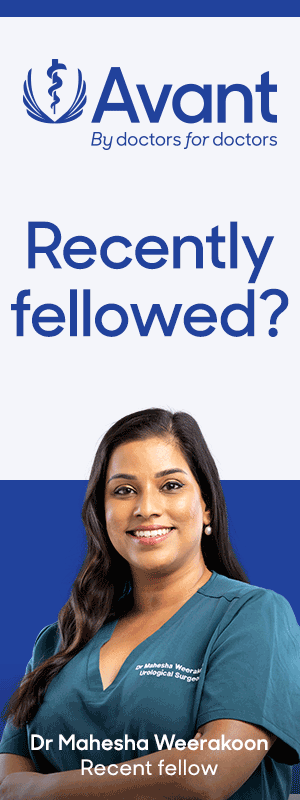‘Simulation is a technique, not a technology, to replace or amplify real experiences with guided experiences that evoke or replicate substantial aspects of the real world in a fully interactive manner.’1
Intrapartum and immediate postpartum obstetric emergencies, where there is a direct threat to the life of a mother or baby, are relatively infrequent. The commonest obstetric emergency is postpartum haemorrhage (PPH); still the biggest killer of women of reproductive age worldwide.2 Other intrapartum emergencies, such as placental abruption during labour (less than 0.5% incidence), cord prolapse (less than 0.5% incidence), uterine inversion (less than 0.1% incidence) are infrequent, and many obstetricians and midwives will only see some of these conditions once or twice in a career, if at all. Because of this rarity, maternity care staff routinely train in the correct management of infrequently occurring emergencies, to ensure competence in safe patient care. When used effectively, simulation-based education can result in powerful learning experiences.
Obstetric emergency training courses available in Australia and New Zealand
To provide this sort of teams-based simulation training, a variety of courses in obstetric emergency management have proliferated in Australia and New Zealand (NZ) over the past 10–15 years. Calvert et al estimated that there were 12 different courses available in Australia and NZ in 2013 providing this sort of training locally.3 These include courses such as PROMPT (Practical Obstetric Multi-Professional Training), ALSO (Advanced Life Support in Obstetrics), MOET (Managing Obstetric Emergencies and Trauma), NOVICE, IN TIME, MACRRM (Maternity Crisis Resource Risk Management), and FONT (Fetal, Obstetric, Neonatal Training).
Many of the cited courses share similarities: they are based on Crisis Resource Management (CRM) principles,4 and emphasise team training, improved communication, and improved awareness of a deteriorating clinical situation. The courses use simulation in a variety of settings, from teaching competency-based simulations to large, interprofessional immersive simulations. The most widely undertaken course in Australia and NZ is PROMPT, a UK-developed course, now run internationally by the PROMPT Maternity Foundation.
History of PROMPT in Australia and NZ
PROMPT was formally introduced into Australia in 2010, when the Victorian Managed Insurance Agency purchased the Australian Licence for PROMPT from the PROMPT Maternity Foundation UK and gifted the licence to RANZCOG. Uptake since has been variable in different jurisdictions, remaining strong in Victoria and Queensland with less uptake in the other states.
In NZ, the course grew more organically, being championed by some dedicated clinicians and midwives, and has had wide that is likely to continue, utilising the recently upgraded PROMPT 3 program. PROMPT and its peers are designed to improve CRM skills and to ensure that participants are familiar with their working environment and know how to escalate a patient’s care in the event of a (rare) emergency.
Interprofessional education and improved patient care
The World Health Organization defines interprofessional education (IPE) as occurring ‘when two or more professions learn about, from and with each other to enable effective collaboration and improve health outcomes’.5 The recent interest in IPE grew out of the patient-safety movement,6 where it was recognised that failures of teamwork and interprofessional communication were, and continue to be, frequent causes of harmful medical errors. A recent metanalysis showed IPE is associated with a positive impact on collaborative teamwork, and improving knowledge and skills,7 and has been shown to reduce the barriers and preconceptions that often exist among healthcare groups.8
Staff attending PROMPT have reported significant increases in teamwork,9 10 safety and improved perception of management.11 Participants in PROMPT report skill acquisition across multiple domains and an improvement in principles communication, leadership and prioritisation in an emergency situation.12 Training healthcare professionals that know how to adapt within a team to an evolving emergency clinical situation may help to ensure that each patient receives care from the professionals most suited to their needs.
There is accumulating evidence that poor workplace culture can lead to worse patient outcomes.13 Workplace culture can be difficult to change, as it can be a result of poor leadership, ineffective human relations practices, entrenched workplace practices, and a reluctance of staff to complain. Training in simulation, assuming that it is mandated for senior staff to participate, offers an opportunity to tackle these issues in innovative ways.
Clinical outcomes following team training
Despite a clear demonstration of improved teamwork and skill acquisition associated with teams-based simulation training, there is mixed data with respect to improving clinical outcomes. A recent Cochrane review of interactive training of healthcare providers on the management of life-threatening emergencies in hospital found existing evidence was of low or very quality, and suggested uncertainty regarding a change to morbidity rates, change in clinical practice outcomes or change in organisation of care.14
The reduction of complications associated with the management of shoulder dystocia appears a clear benefit associated with team simulation training. Twelve-year data published from Bristol showed yearly team training using PROMPT methodology was associated with no cases of permanent brachial plexus injury in the last four years of follow up, involving more than 17,000 vaginal births.15 Several other authors have also demonstrated a reduction of brachial plexus injury,16 17 18 or trauma19 associated with the management of shoulder dystocia following simulation training courses.
The impact of simulation training courses on other clinical outcomes is less impressive. Initial retrospective review of the PROMPT Australian pilot suggested an improvement of Apgar 1, cord lactate and baby’s length of stay,20 while subsequent review of retrospective data examining outcomes pre- and post-delivery of PROMPT in Australia suggested no change in a composite overall outcome.21 This analysis did demonstrate an increase in rates of transfer to operating theatre (OT) and an increase in rates of Bakri balloon use for management of severe PPH.22 The described increase in invasive management aligns with findings from a Dutch multicentre randomised controlled trial examining a one-day simulation course, which showed attendance was associated with a two-fold increase of treatment with four or more packed cells of blood transfusion, embolisation or hysterectomy in the case of a PPH.23
Both authors hypothesised that these outcomes were affected by increased recognition and willingness to escalate management. In the same way that readiness for action can decrease morbidity associated with shoulder dystocia, it can increase medical intervention with respect to PPH.
It is important to recognise that these findings are specific to a high-resource setting. Delivery of a simulation-based training program in Tanzania resulted in a 38% reduction in PPH from 2.1–1.3%.24 The authors commented that this is particularly crucial in a region with a high prevalence of anaemia and lack of blood banking. While simulation-based team training can prevent medical intervention in low-resource settings, it is possible that it may increase it in the high-resource environment, particularly with respect to PPH.25 26 Further robust research is required to investigate the use of simulation training and its impact on a broad range of maternal and neonatal outcomes.
The MOTHER course
The RANZCOG Board has commissioned development of a Multi-professional Obstetric Training in Hospital Emergency Response (MOTHER) course to address perceived deficiencies in available resources and to specifically enhance the incorporation of simulation, broader multi-disciplinary involvement and online delivery. Further, the Board recognised the need for content that could be readily adapted to meet unique local needs, including Aboriginal and Torres Strait Islander and Māori health and the challenges facing rural and remote healthcare services.
Simulation activities are delivered in different formats, each with different learning goals. MOTHER adopts the ARRON rule (as reasonably realistic as objectively needed),27 to ensure units of varying acuity and resources can access the materials associated with the course.
MOTHER is designed as a suite of programs to be run in hospitals, primarily as an educational tool to facilitate teams-based training for maternity care providers in their place of work. These resources will feature:
- A library of resources to be used for case-based peer-assisted learning. These cases allow exploration of other emergencies not currently covered by PROMPT (e.g. mental health emergencies, occupational violence and difficult patient interactions). Case-based learning will also allow embedding of other training, such as CTG interpretation within the cases.
- A suite of resources to use for performing various types of simulations in hospitals, including:
- skills-based SIMs to cover skill gaps in various staff, including breech delivery and shoulder dystocia
- immersive simulations that will be developed and scripted, allowing engagement with other hospital teams who have roles in the team management of obstetric emergencies (e.g. neonatologists, anaesthetists, obstetric physicians, ICU staff, emergency medicine staff.
- Workplace familiarisation SIMs, which will be designed to ensure that all staff are familiar with their working environment, can operate emergency equipment, and can easily access workplace instructions, policies and procedures.
A course such as this allows a hospital to work with RANZCOG and develop bespoke courses to undertake activities to address particular workplace needs such as simulating an adverse outcome to see what went wrong, or simulating the rollout of new policy initiatives (e.g. Category 1 CS protocol in a COVID-19 positive woman). The emphasis of MOTHER is on the educational attainment and incremental improvement in the clinical skills of participants, with clearly outlined learning objectives, and cases of varying complexity to cater to the requirements of the unit.
Summary
Teams-based simulation training plays an important role in modern obstetric emergency training and crisis resource management. Its benefits include improved communication and teamwork arising from IPE as well as improved clinician confidence in the execution of skills-based procedures such as management of shoulder dystocia and breech delivery. It is important to recognise the limited existing evidence to examine the impact of teams-based simulation on clinical outcomes. Further simulation research focused on improving obstetric outcomes should be encouraged, and further analysis of outcomes associated with current models of training examined. While the importance of improving teamwork, communication and procedural competence is evident, the possibility of unintended and unanticipated consequences associated with teams-based simulation training must continue to be assessed.
The introduction of the MOTHER course provides an opportunity for RANZCOG to employ different educational approaches to assist all staff involved in obstetric emergency training to upskill in clinical management and procedural skills, but also to tackle less tangible problems, such as workplace culture and bullying, which has also been shown to lead to poorer mental health in trainees and worse patient outcomes. It is essential that adequate evaluation is linked with the introduction of the MOTHER course to assess both its effectiveness as a training tool, and its impact on clinical outcomes.
References
- Gaba D. The future vision of simulation in health care. Qual Saf Health Care. 2004;13(Suppl 1):i2–i10.
- National Maternity Data Development Project. Research brief No 8. Primary Postpartum haemorrhage. Available from: www.aihw.gov.au/getmedia/b59e8c8c-2b78-4f13-8b70-b46814a7e9ee/brief_8_per-82.pdf.aspx
- Calvert KL, McGurgan PM, Debenham EM, et al. Emergency Obstetric Simulation Training. ANZJOG. 2013;53(6):509–16.
- Gaba D. Crisis resource management and teamwork training in anaesthesia. BJA. 2010;105(1):3-6.
- WHO. Framework for action on interprofessional education and collaborative practice. Geneva: World Health Organization, 2010. Available from: www.who.int/hrh/resources/framework_action/en/
- Institute of Medicine (US). Health professions education: a bridge to quality. Washington, DC: National Academies Press, 2003.
- Guraya SY, Barr H. The effectiveness of interprofessional education in healthcare: A systematic review and meta-analysis. Kaohsiung J Med Sci. 2018;34(3):160-5.
- Cusack T, O’Donoghue G. The introduction of an interprofessional education module: students’ perceptions.
Qual Prim Care. 2012;20(3)231-8. - Shoushtarian M, Barnett M, McMahon F, Ferris J. Impact of introducing practical obstetric multi-professional training (PROMPT) into maternity units in Victoria, Australia. BJOG. 2014;121(13):1710-8.
- Kumar A, Sturrock S, Wallace E, et al. Evaluation of learning from Practical Obstetric Multi-Professional Training and its impact on patient outcomes in Australia using Kirkpatrick’s framework: a mixed methods study. BMJ Open. 2018;8(2):e017451.
- Shoushtarian M, Barnett M, McMahon F, Ferris J. Impact of introducing practical obstetric multi-professional training (PROMPT) into maternity units in Victoria, Australia. BJOG. 2014;121(13):1710-8.
- Kumar A, Sturrock S, Wallace E, et al. Evaluation of learning from Practical Obstetric Multi-Professional Training and its impact on patient outcomes in Australia using Kirkpatrick’s framework: a mixed methods study. BMJ Open. 2018;8(2):e017451.
- Braithwaite J, Herkes J, Ludlow K, et al. Association between organisational and workplace cultures, and patient outcomes: systematic review protocol. BMJ Open. 2016;6(12):e013758.
- Merriel A, Ficquet J, Barnard K, et al. The effects of interactive training of healthcare providers on the management of life-threatening emergencies in hospital. Cochrane Database Syst Rev. 2019;9(9):CD012177.
- Crofts JF, Lenguerrand E, Bentham GL, et al. Prevention of brachial plexus injury—12 years of shoulder dystocia training: an interrupted time-series study. BJOG. 2016;123(1):111-8.
- Dahlberg J, Nelson M, Dahlgren MA, et al. Ten years of simulation-based shoulder dystocia training – impact on obstetric outcome, clinical management, staff confidence, and the pedagogical practice – a time series study. BMC Pregnancy Childbirth. 2018;18(1):361.
- Grobman WA, Miller D, Burke C, et al. Outcomes associated with introduction of a shoulder dystocia protocol. American J Obstet Gynecol. 2011;205(6):513-7.
- Fransen AF, van de Ven J, Schuit E, et al. Simulation-based team training for multi-professional obstetric care teams to improve patient outcome: a multicentre, cluster randomised controlled trial. BJOG. 2017;124(4):641-50.
- Shoushtarian M, Barnett M, McMahon F, Ferris J. Impact of introducing practical obstetric multi-professional training (PROMPT) into maternity units in Victoria, Australia. BJOG. 2014;121(13):1710-8.
- Kumar A, Sturrock S, Wallace E, et al. Evaluation of learning from Practical Obstetric Multi-Professional Training and its impact on patient outcomes in Australia using Kirkpatrick’s framework: a mixed methods study. BMJ Open. 2018;8(2):e017451.
- Kumar A, Sturrock S, Wallace E, et al. Evaluation of learning from Practical Obstetric Multi-Professional Training and its impact on patient outcomes in Australia using Kirkpatrick’s framework: a mixed methods study. BMJ Open. 2018;8(2):e017451.
- Fransen AF, van de Ven J, Schuit E, et al. Simulation-based team training for multi-professional obstetric care teams to improve patient outcome: a multicentre, cluster randomised controlled trial. BJOG. 2017;124(4):641-50.
- Nelissen E, Ersdal H, Mduma E, et al. Clinical performance and patient outcome after simulation-based training in prevention and management of postpartum haemorrhage: an educational intervention study in a low-resource setting. BMC Pregnancy Childbirth. 2017;17(1):301.
- Shoushtarian M, Barnett M, McMahon F, Ferris J. Impact of introducing practical obstetric multi-professional training (PROMPT) into maternity units in Victoria, Australia. BJOG. 2014;121(13):1710-8.
- Fransen AF, van de Ven J, Schuit E, et al. Simulation-based team training for multi-professional obstetric care teams to improve patient outcome: a multicentre, cluster randomised controlled trial. BJOG. 2017;124(4):641-50.
- Macedonia CR, Gherman RB, Satin AJ. Simulation laboratories for training in obstetrics and gynecology. Obstet Gynecol. 2003;102(2):388-92.







Leave a Reply